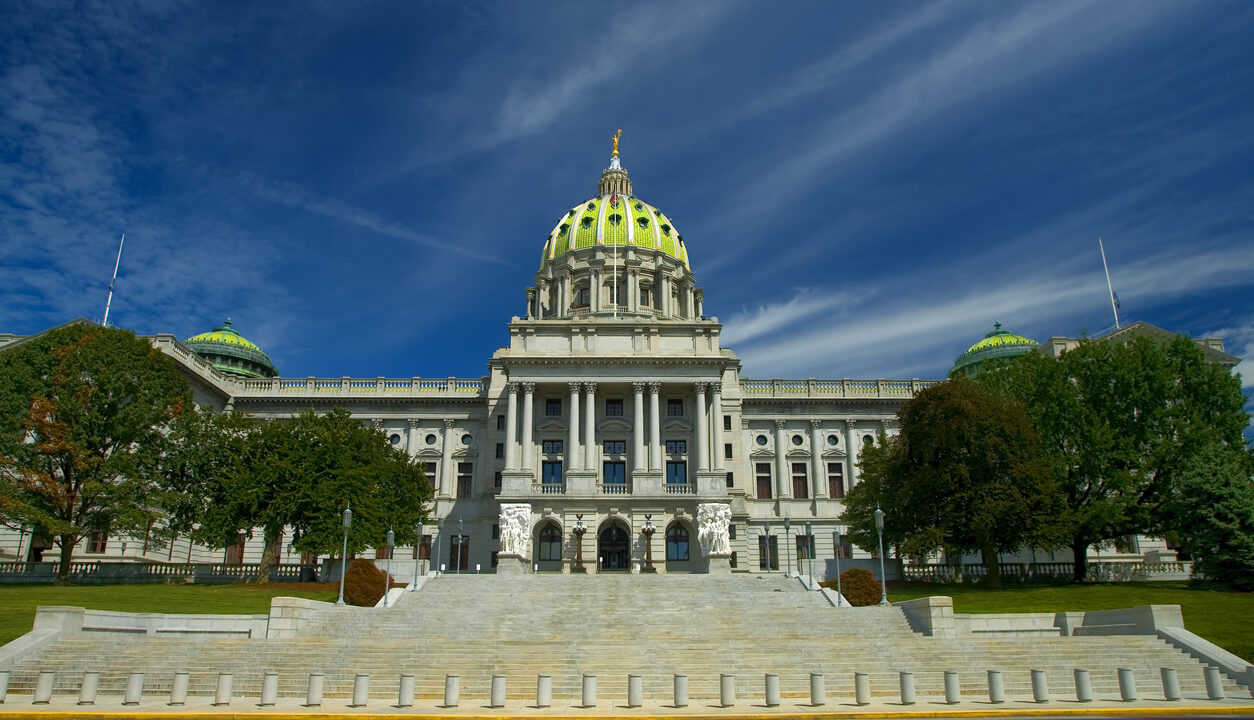Fact Sheet

Pennsylvania State Budget Outlook
In November, the Pennsylvania Independent Fiscal Office (IFO) released its Five Year Economic and Budget Outlook. Here are several trends for lawmakers.
Pennsylvania’s Economy Remains Stagnant
- IFO forecasts Pennsylvania’s real gross domestic product (GDP) growth (adjusted for inflation) will be zero percent in 2023.[1]
- Moreover, the IFO expects Pennsylvania to continue losing population over the next few years.
- This is part of a long-term trend of stagnant population growth, combined with a net loss of residents in state-to-state migration.[2]
- While Pennsylvania’s unemployment rate is at historic lows, the labor force participation rate—the percentage of working-age adults employed or looking for work—is also in decline.
- Pennsylvania’s labor force has decreased by 120,000 workers versus pre-Covid19 pandemic levels.[3] The IFO estimates that 50 percent is due to demographics, and 50 percent due to other factors.
- This rate must increase to fill the number of available jobs in Pennsylvania.
- The IFO projects payroll employment won’t recover to pre-pandemic levels until 2027.
Enhanced Funding for Medicaid Is Temporary
- The Families First Coronavirus Response Act (FFCRA), amended by the Coronavirus Aid, Relief, and Economic Security (CARES) Act, provides qualifying states a temporary 6.2 percent increase to their Federal Medical Assistance Percentage (FMAP), or Medicaid matching rate, so long as there is a federally declared public health emergency.[4]
- The 2022–23 Pennsylvania state budget uses a total of $2.57 billion of enhanced FMAP to offset programs costs.
- The budget enacted in June 2022 assumed $1.26 billion in enhanced FMAP funds.[7] Gov. Tom Wolf’s administration projected another $1.31 billion due to extensions of the health emergency.
- State government will be responsible for picking up more Medicaid costs once the health emergency ends.
- Additionally, as part of the public health emergency, states are forbidden from removing recipients from Medicaid rolls unless they die or leave the state—even if incomes exceed Medicaid eligibility.
- This has led to a dramatic increase in Medicaid enrollment, nearly 30 percent, which continues even as the economy improves.[8]
- The IFO projects a 13 percent decline in Medicaid enrollment once the public health emergency ends and redetermination of eligibility begins.
- The IFO estimates a 12-month process for the state to determine Medicaid eligibility. Given the size and cost of the estimated Medicaid-ineligible population, lawmakers should work to expedite this process.[9]
Pennsylvania Faces a Long-Term Budget Deficit
- The temporary federal funds allow for the current budget to be balanced—but General Fund spending exceeds ongoing state revenues. One-time federal pandemic spending does not change the fact that Pennsylvania state government spends more than it collects.
- The forecast puts net General Fund revenues at $42.46 billion, while appropriations are $44 billion for Fiscal Year (FY) 2022–23.
- The temporary enhanced FMAP reduces state costs by $2.57 billion, creating a temporary and artificial budget surplus.
- The IFO projects deficits of $1.67 billion next year, followed by $2.4 billion in 2024–25, and exceeding $3 billion in the years following.
- The IFO projects the year-end General Fund balance to reach $6.68 billion at the end of June 2023.[10] This effectively represents the amount in the state’s checking account.
- At this current rate of spending and revenue growth, lawmakers will be facing a tax increase in 2026, unless they act to:
- Reduce annual spending growth,
- Adopt policies that increase state economic growth, or
- Tap into the Rainy Day Fund, delaying the inevitable and undermining recent accomplishments. Pennsylvania still ranks below the national average and is about at recommended levels of Rainy Day reserves.[11]
[1]Independent Fiscal Office (IFO), “Pennsylvania Economic & Budget Outlook: Fiscal Years 2022–23 to 2027–28,” (Harrisburg: IFO, November 15, 2022) 11, http://www.ifo.state.pa.us/download.cfm?file=Resources/Documents/Five_Year_Outlook_2022.pdf.
[2]Commonwealth Foundation, “Pennsylvania’s Population Problems,” February 8, 2022, https://www.commonwealthfoundation.org/research/pennsylvania-population-problems/.
[3]Independent Fiscal Office (IFO), “Pennsylvania Economic & Budget Outlook,” 10.
[4]Congressional Research Service, “Temporary Federal Medical Assistance Percentage (FMAP) Increase for Title IV-E Foster Care and Permanency Payments,” September 30, 2022 [update], https://crsreports.congress.gov/product/pdf/IN/IN11297.
[5]Alex Ruoff and Ian Lopez, “Biden Extends Covid Public Health Emergency While States Move On,” Bloomberg Law, November 14, 2022, https://news.bloomberglaw.com/health-law-and-business/end-for-covid-public-health-emergency-declaration-uncertain.
[6]Independent Fiscal Office (IFO), “Pennsylvania Economic & Budget Outlook,” 25.
[7]Independent Fiscal Office (IFO), “Pennsylvania Economic & Budget Outlook,” 33.
[8]Commonwealth Foundation, “Pa’s Wayward Welfare State,” October 27, 2022, https://www.commonwealthfoundation.org/research/pa-wayward-welfare-state/.
[9]Elizabeth Stelle and Stefanie Mason, “Medicaid’s Endless Expansion,” July 5, 2022, https://www.commonwealthfoundation.org/research/medicaid-endless-expansion/.
[10]Independent Fiscal Office (IFO), “Pennsylvania Economic & Budget Outlook,” 41.
[11]Pew Charitable Trusts, “Fiscal 50: State Trends and Analysis,” State Fiscal Health Project, December 16, 2022 [update], https://www.pewtrusts.org/en/research-and-analysis/data-visualizations/2014/fiscal-50?utm_campaign=2022-10-21+Fiscal+50&utm_medium=email&utm_source=Pew&subscriberkey=003U0000011CtUgIAK#ind5.